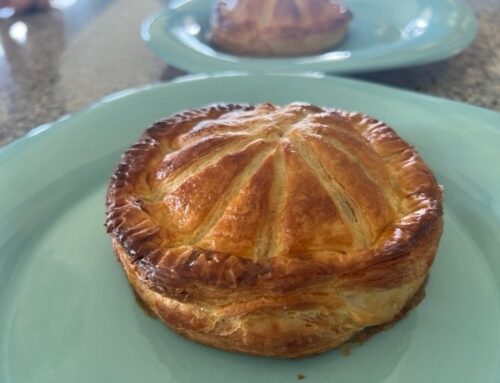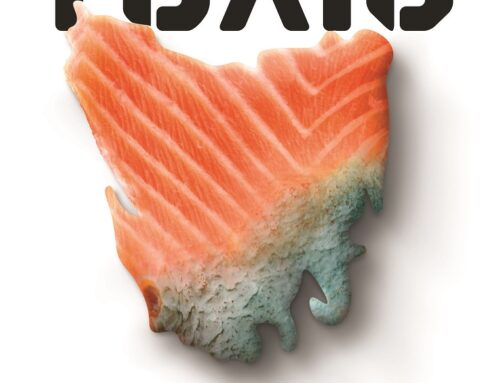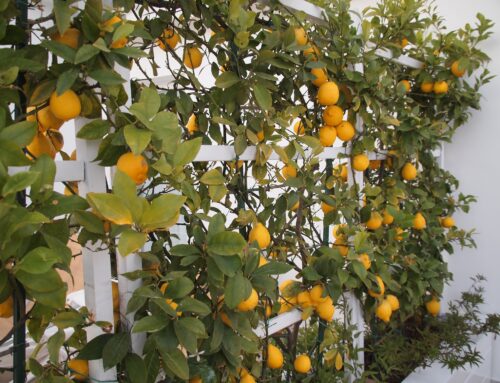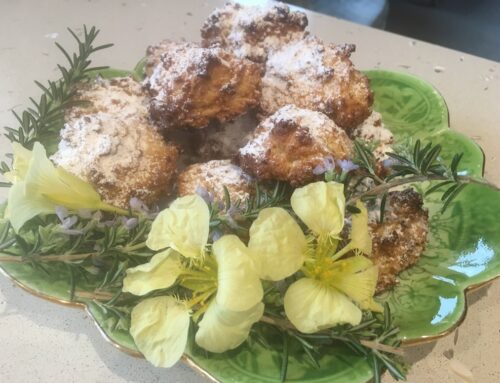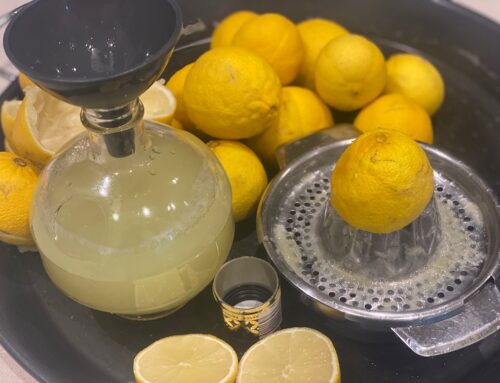I love my back balcony herb garden. It is a joy for me to pick my fresh herbs for the cooking classes. Now, my young, spring garlic is about to be harvested. I planted the cloves last April, so you need to be patient; it takes a while to grow, and mine still needs a couple of weeks to get a little bigger. Late November is the best time to harvest. I planted 36 cloves, in 3 of my garden tubs, and they usually produce some excellent bulbs Their flavour is exceptional, so next April, plant some for yourself.* At the end of this I have explained how to grow your own.
Garlic has been valued for both its culinary and medicinal properties for thousands of years. It is known to have antibacterial and antiviral properties and boosts the immune system. Chewing a raw clove, washed down with water, relieves the symptoms of colds and flu, and possibly will reduce the likelihood of cross-infection! Garlic will moderate cholesterol, blood pressure and fight cancer. Garlic is high in sulphur compounds and these act as anti-oxidants. If you eat a clove a day for its health benefits you will need about 2 bulbs each month!
Garlic grown in Australia is available from late spring through to May or June. Most mature garlic is sold dried and varies slightly in size, colour and flavour. Young garlic, with the small, mild-flavoured bulbs are sold with edible, long green stems, similar to green onion, shallot, tops.
When buying garlic, look for large, plump, very firm, dry bulbs with no sign of green shoots. This will ensure you have strong-flavoured garlic.
At home, store your garlic in a cool, dark, well-ventilated place. Quality garlic will last for months. Young, fresh garlic should be used within three to four days.
Garlic combines well with so many foods and is especially good with artichokes, basil, bread, butter, chicken, lamb, lemon, mushrooms, octopus, olive oil, onion, parsley, pasta, pork, potatoes, prawns and tomatoes. In France garlic snails and dripping in a garlicky butter sauce; some say the sauce is the best part!
- To peel a garlic clove, use a large knife. Put the flat of the blade over the clove and press the blade very firmly with the heel of your hand. The clove will crack and the skin will loosen and come off easily. Intense flavour is released when a clove is cut or crushed.
- You may find that the centre of a garlic clove is green. Many chefs take time to remove this shoot because they feel it imparts a too pungent flavour to the food. I think it is fine to leave the cloves intact when cooking garlic; however if you plan to eat the garlic raw, as in Pesto alla Genovese, take a minute to remove the little green sprout–to-be.
- When frying, slice the garlic cloves lengthwise and cook until golden and nutty. The longer you cook garlic, the milder it gets. Take care not to burn it, once the garlic has browned to golden, remove it from the pan, as once past the golden colour, it has an unpleasant, bitter flavour that can ruin your dish. So keep a close eye on your garlic when cooking it.
Imported garlic is sprayed with Methyl Bromide. It is a sad fact is that ninety percent of the garlic we eat in Australia is imported and every single bulb is fumigated with one the world’s most dangerous chemicals, Methyl Bromide. Methyl Bromide is highly toxic to humans and all living things. Acute exposure burns the skin and causes severe kidney damage. It has devastating effects on the central nervous system which could be fatal. In 1991 Methyl Bromide was found to be one of the chemicals that was destroying the earth’s ozone layer and was to be phased out by January 2005 but it is still used as a fumigant by our Quarantine Department.
Tim Flannery, author of The Weather Makers, asked why is so much of our garlic imported? He thinks the reason harks back our British tradition, as exemplified by famous English cook Mrs Beeton, who felt that garlic was an alien flavour to the English palate!
So it took the arrival of European immigrants for Australians to finally appreciate its culinary attributes, and by then we had relied for so long on cheap imports that production never really got started. Because the bulb is so labour intensive to grow, China has become our largest supplier and by forcing down its price, has almost destroyed any chance that Australians will replace the heavily fumigated imports.
Garlic juice is used also as a repellent against aphids, particularly when sprayed on roses. It actually kills mosquitoes and when mixed with Pyrethrum gives control of a wide range of pests.
Aioli – garlic mayonnaise
Makes 500ml
6 cloves garlic, peeled
2 egg yolks
1 tbsp Dijon mustard
375ml extra virgin olive oil
Combine garlic with a pinch of sea salt in a mortar and pestle and crush to a fine paste. Transfer to a bowl and whisk in egg yolks and mustard, then add olive oil in a thin steady stream, whisking continuously until incorporated, adding a little warm water if aioli becomes too thick. Season to taste with sea salt.
Serve aioli as a dip, spread or as an accompaniment to grilled meat.
*To grow your own garlic
In April, buy the best quality Australian garlic bulbs you can find. Choose a sunny spot with well-drained soil and fertilise and mulch the soil. Separate your bulbs into cloves, then plant each clove about 5 cm down, with 2 cm of soil over the top. Pointy end goes to the top. Allow 15 cm between them if room permits.
Cover with mulch, like sugar-cane mulch, to help keep the weeds away and the moisture in. Water regularly but not too much; they love nitrogen so a complete fertilizer will help keep them happy. Then wait. After about 6 months…you will be eating your young green garlic in October or November. After that time, it will continue to grow into the more familiar bulbs with cloves.
I use a lot of garlic in the cooking school and so my supply does not last for long. When I need more, my friend Julie Wallace of Weyhill Garlic Farm near Leongatha, supplies more. You may also like to buy some of Julie’s fabulous organic garlic. Contact Julie or go to a Farmers’ Market where she is most weekends – The Gasworks in Port Melbourne, Veg Out in St Kilda, Slow Food in Abbotsford, Newport Substation, Eltham, Kingston, Bentleigh, Warragul, Inverloch and Coal Creek.



